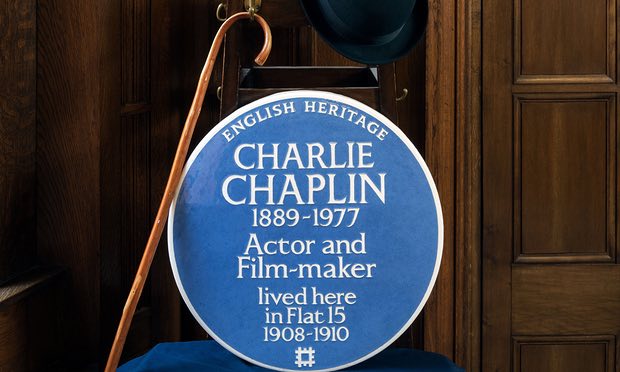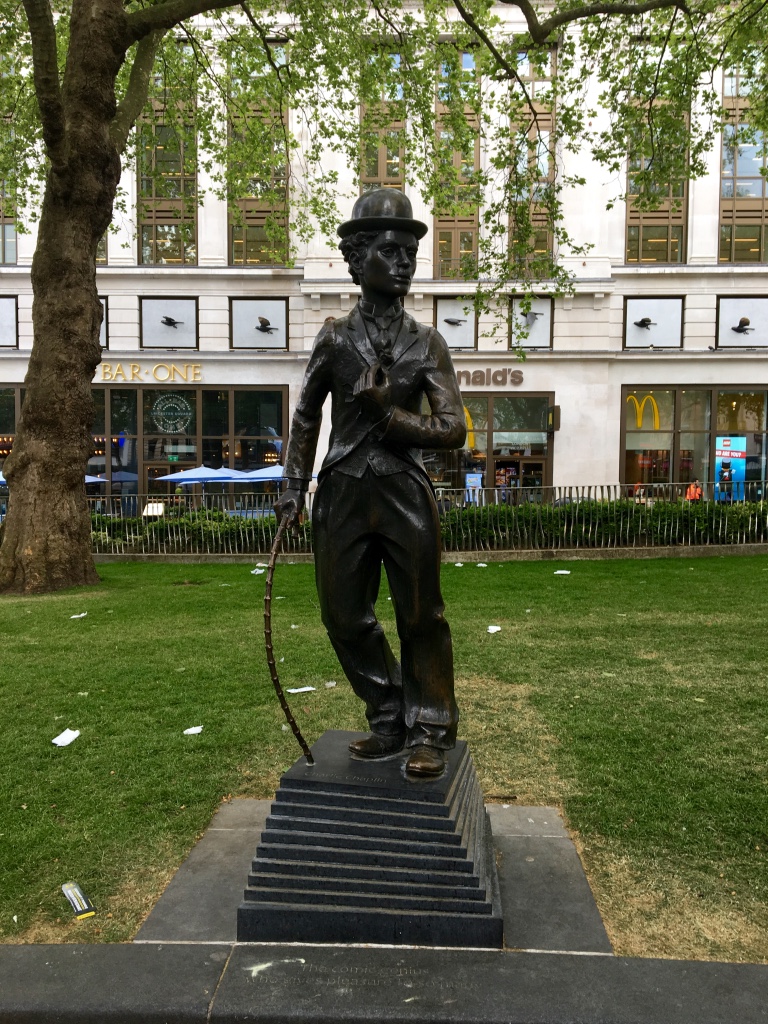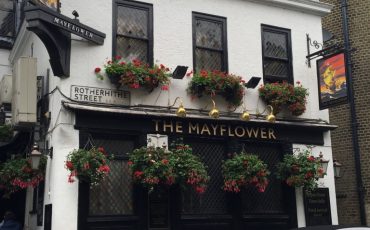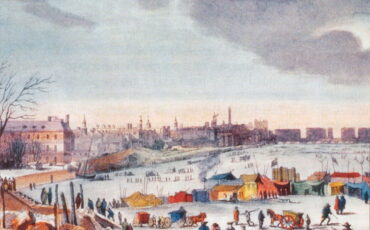Charlie Chaplin, one of the greatest stars of early cinema, has been honoured with an English Heritage blue plaque at his former London home in Glenshaw Mansions on Brixton Road in Kennington. The blue plaque was unveiled by the British comedian and Chaplin admirer Paul Merton, Chaplin’s granddaughter Kathleen, a singer, was also present with her seven-year-old son. Christer Jonsson, a Swedish comedian and magician, who had come complete with battered top hat and cane, demonstrated Chaplin’s famous tramp walk after the unveiling.
 Charlie Chaplin portrait circa 1920. Photo Credit: © Public Domain via Strauss-Peyton Studio.
Charlie Chaplin portrait circa 1920. Photo Credit: © Public Domain via Strauss-Peyton Studio.
Chaplin had no birth certificate but it is believed that he was born in Walworth in 1899. He endured what he called ‘a forlorn existence’ with an alcoholic and largely absent father and a mother beset by mental problems who was eventually institutionalised. In 1908, however, his fortunes were looking up and he got his break with the company of the famous impresario Fred Karno. Despite Karno’s doubts about ‘the pale, puny sullen-looking youngster’ he was an instant hit with London music-hall audiences and a move to America soon beckoned.
The flat was fondly remembered by Chaplin in his 1964 autobiography as his ‘cherished haven’. Today, Glenshaw Mansions – newly built when Chaplin and his brother moved in – survives much as they must have known it, despite the bomb that fell nearby during the Second World War. The building was referred to in Chaplin’s novella, Footlights (first published in 2014).
 Charlie Chaplin Blue Plaque in London. Photo Credit: © English Heritage.
Charlie Chaplin Blue Plaque in London. Photo Credit: © English Heritage.
The Chaplin brothers moved into the four-storey mansion block and spent £40 on furnishings, £15 more than they had budgeted. The money bought a couch, two armchairs, a fretwork Moorish screen lit by a yellow bulb and a tasteful female nude portrait. Chaplin described the design as ‘a combination of ‘a Moorish cigarette shop and a French whore-house – but we loved it’. He left for America in 1910, leaving a note for Sydney because he disliked goodbyes. Although Chaplin found widespread fame and fortune in America, his comedic roots began in the music hall and vaudeville scene of his home city.
 Charlie Chaplin Statue in Leicester Square, London. Photo Credit: © Ursula Petula Barzey.
Charlie Chaplin Statue in Leicester Square, London. Photo Credit: © Ursula Petula Barzey.







Leave a Reply